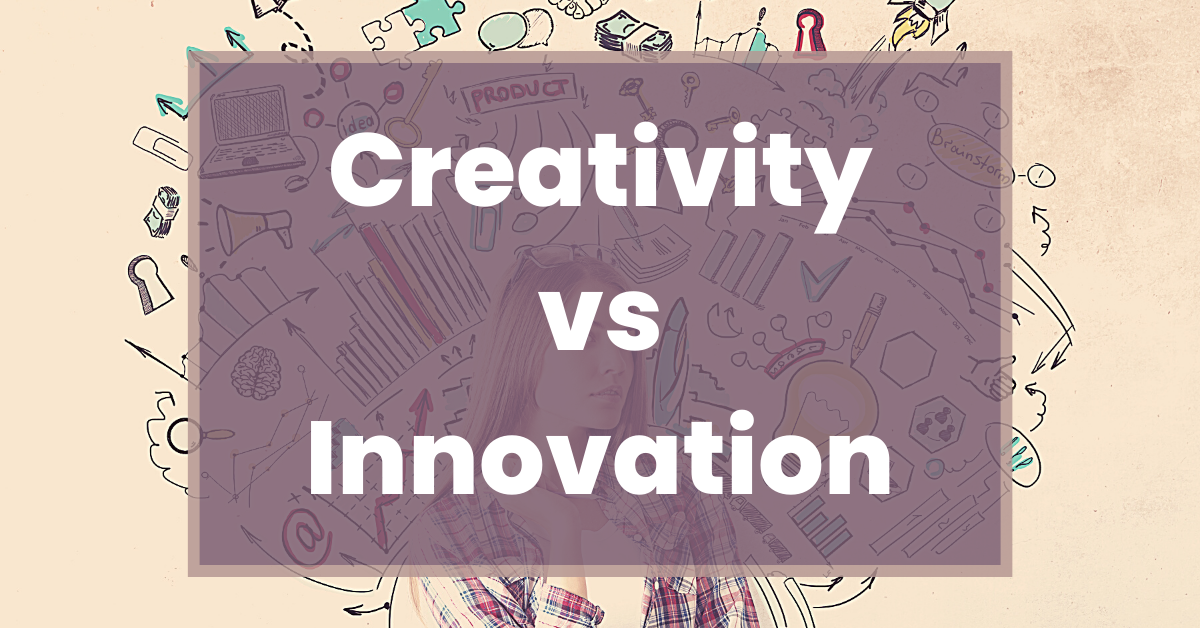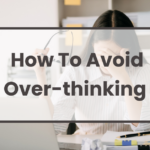What is meant by Creativity and Innovation?
Here at Effective Intelligence, this is a question that comes up very often. The terms Creativity and Innovation are often used interchangeably. Is there any actual difference between the two, or are they really just the same thing?
Both of these terms are used a lot in the realm of business and entrepreneurship. Whichever of them you pick, you’ll always find it as a highly-prized quality that businesses desperately want and need. Those with so-called creative or innovative tendencies are finding themselves in high demand.
In common parlance it is assumed that Creativity and Innovation essentially have the same meaning, and yet we find that very creative people are often really bad at getting their brilliant idea into action, having won the necessary support of other people.
The imagination required to come up with something new and original may not be shared by others who can say “No”.
A basic concept of creating new things that others have never thought of creating before applies to products, processes, strategies and business models and is indeed shared by both creativity and innovation; but there is a gulf between coming up with and taking up a new invention.

A company that bridged this gulf is Uber, who created a taxi company without owning any vehicles. Real out of the box thinking was pursued with all the necessary logistics of realism and judgement needed to make it work.
However, if we dig a little deeper, there is more to it than that. There are multiple viewpoints on the differences between Creativity and Innovation to be found only in Effective Intelligence, where our long experience of action research enables us to be very specific in tracking the different kinds of thought involved.
But first let’s look at some other common viewpoints from the world of business and entrepreneurship.
Mainstream viewpoints on the differences between Creativity and Innovation
If you search this question online, you will find a variety of plausible answers to this burning issue. We will now look at some of the highlights, and then untangle all of the confusion and provide clarity with the Effective Intelligence viewpoint!
Starting with Creativity, you will commonly find it defined as being in a state of open-mindedness and being able to think outside of the box in order to create new things.
You’ll also often find Creativity referred to broadly as ‘the arts’. Painting, drawing, writing of prose and poetry, music, dance, web design and graphic design are all considered ‘creative’ pursuits.
Innovation on the other hand, at least in these commonly found definitions, seems to be more about the practical application of creativity in order to create real value for others.
An example of this would be the invention of the smartphone. It had never been done before, making it a creative invention, but it still needed a lot of work so that it could bring tremendous value to the market (innovation).
A Mainstream Example
Taking stock of these common definitions of the terms and their differences, here is an example in action:
Creativity could be a flash of inspiration or the brainstorming of many ideas, most of which will turn out to be useless. Innovation is the seizing of the best idea(s) of the bunch, and turning them into practical reality to provide real benefit to the market.
Without innovation, creative ideas are just ideas with no applicable use. And without creativity, innovation cannot happen because the whole process must start with ideas.

Measurement of Creativity and Innovation
The commonly held viewpoint on measurement is that Innovation can be measured, but Creativity cannot.
Most people in business do not think Creativity can be measured because it is a subjective state or event that only certain people have the privilege of being in.
On the flip side, they do consider Innovation to be measurable, because you can measure the ‘newness’ of an idea – especially when looking at its market impact.
Here at Effective Intelligence we believe there is much to learn from these definitions and comparisons, but we know that they don’t go far enough.
Creativity and Innovation in Effective Intelligence
Effective Intelligence is based on 45 years of action-research and development, in cooperation with Philips Electronics, Shell and other leading organisations, large and small.
Throughout this long period, our founder J D Rhodes reached a number of profound conclusions on Creativity and Innovation.
When comparing these terms, it actually provides us great clarity to resort to etymology. Words are often best understood by looking at their roots.
Creativity comes from the Latin verb creare, which means to create or make (out of nothing).
Innovation also comes from a Latin verb – innovare, meaning to renew.
At this point, you are probably thinking that you didn’t come here for a Latin lesson – hold your horses! This will all make sense in a moment.
Creativity vs Innovation: The Effective Intelligence Model of Mind

The above visual represents all the thinking that the mind can do. Every thought you ever have is embraced within these three interacting and competing segments of the mind’s activities: Judging (Blue), Describing (Red) and Realising (Green).
This simple visual is built on 45 years of research and application of Effective Intelligence, and has proven itself time and time again. It shows with profound simplicity all the possible avenues of your mind when it is faced with a difficult task.
Inventing a never-before-seen product would be a great topical example of such a task.
This doesn’t only require Realising what is new (Green), because ideas are just ideas.
You also need to use Red to Describe the realities of the real world that challenge your invention – for example the costs of raw materials, the market conditions, the macroeconomic risks involved, the possibilities of legal action, etc.
You also need to use your Blue Judgement to check your reasoning and reach conclusions given the ideas and information that you have. Blue drives action, and without it you can’t create anything.
In Effective Intelligence, we thus view Creativity as much more than a state of open-mindedness. That would be Green only. Creativity is actually the skilful unification of the three colours.
In order to successfully create something, you must have ideas, information and decisions. If you are missing one or more of these, you cannot create successfully.

Incidentally, when you mix together Green, Red and Blue light, you get a brilliant white light. At the risk of sounding evangelical, this is a great metaphor for the almost divine perfection that is true Creativity!
In summary then, from the Effective Intelligence viewpoint, Creativity is Green and actually depends on total release from both Red reality and Blue judgement; but this entails reverting to Red and Blue to ensure your new idea deserves to work.
Then, only when the result is agreed, accepted and brought to action do we have innovation: it actually is working where it is needed.
The reason for the blurred similarity is that both Creativity and Innovation demand all three Colours acting in agile unison – but the specific accuracy of Effective Intelligence reveals how to do so differently for conceiving the idea or bringing on the child!
This is a crucial point. It is so significant that individuals with a good record for creativity are so often terrible at achieving the innovation of their brilliant but unusual invention. Or vice versa.
Because of the difference between creativity and innovation, different sets of thinking-skill are required. We can actually identify this through our research that discovered Thinking-Intentions.
The good news is that this set of mental operations is the basis of our system of Effective Intelligence, through which you can learn to master whatever difficult task you are facing, to reach a new idea or to take it to its market.
Measurement of Creativity in Effective Intelligence
From the mainstream point of view, Creativity cannot be measured because it is considered a subjective state of mind.
In Effective Intelligence though, Creativity CAN be measured. This is possible because of the objective, visible result that you get when you finish a challenging task successfully having used all three colours appropriately.
Alternatively, if a task is not successfully completed, this could be because of a lack of Creativity – meaning that you may have missed one or more of the colours when it was required to use them.
Creativity vs Innovation – Effective Intelligence Definitions
Creativity: The purposeful adoption of a thought process with the intent of producing a solution of unusual excellence that deserves to work.
In terms of the Colours, its driving force is Green.
Innovation: The process whereby a creative idea is adopted, supported and brought successfully to its market.
In terms of the Colours, its driving force is not Green, but Red and Blue. It is “making the strange familiar.”
Your 3 Colours of Thinking
When it comes to thinking, everyone is unique, and indeed every team is unique. Everybody has their own preferences when it comes to using the 3 Colours.
Some people naturally prefer to use Red, others prefer Blue and others Green. Some people have very balanced preferences for 2 out of the 3 Colours, or even a complete balance of all of them!
It is very important that you become aware of your own individual preferences, or Thinking-Intentions, so that you are aware of your strengths and weaknesses when it comes to difficult tasks. This awareness can make the difference between success and failure.
Thankfully, our founder J D Rhodes developed an extremely useful tool that allows you to understand your own preferences. It’s called the Rhodes’ Thinking-Intentions Profile, and you can get your very own profile right now, for free!
The Rhodes’ Thinking-Intentions Profile has been used to great acclaim by more than 150,000 people worldwide, across a wide variety of businesses.
Click here to take our questionnaire and get crucial insights into your very own Thinking-Intentions Profile.








